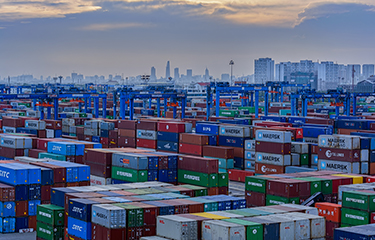US shipping imports stabilize; Vietnam increasingly becoming shipping hub

U.S. imports increased month over month in September 2023 as the industry experienced higher demand for shipping containers.
There has been a recent increase in imports to the U.S. from Asia, according to shipping and analytics organization C.H. Robinson, resulting in longer transit times. European imports, meanwhile, have stabilized, with no disruptions on the horizon – a status shipping industry experts predict will last until November.
“In this ever-shifting trade landscape, one thing is clear: every trade route is a tale of opportunities and challenges. Black swan events like the pandemic, war in Ukraine, and now the Israel- Hamas conflict remind container logistics players to rethink their container logistics strategy,” Container xChange CEO and Co-founder Christian Roeloffs said in a release. “Volatility has led to tangible shifts in shipping trade lanes. While the intra-Asia trade remained stable by far, the Israel-Hamas conflict gives reasons to stay cautious. China trade resurgence is going to again bring some hopes back for carriers.”
Vietnam has also begun to gain more importance as a supply chain hub, according to Container xChange, becoming the second largest trader after China.
Within the first eight months of 2023, bilateral trade between the U.S. and Vietnam reached USD 79 billion (EUR 74 billion). The increase, according to Container xChange, is largely related to increased interest in Vietnam’s green energy and semiconductor manufacturing sectors.
That increase has also reduced the gap in leasing spot rates between Vietnam and China as it becomes a more attractive hub.
Container xChange added that the ongoing Isreal-Palestinian conflict has highlighted the need for flexibility in the Asia-Europe supply chain.
“The recent Israel-Palestinian conflict serves as a stark reminder of the challenges and complexities in establishing new trade corridors,” Roeloffs said. “Similarly, the relationship between Pakistan and Afghanistan underscores the potential for economic cooperation in neighboring states, promising substantial rewards despite historical and political complexities.”
Photo courtesy of Igor Grochev/Shutterstock






Share